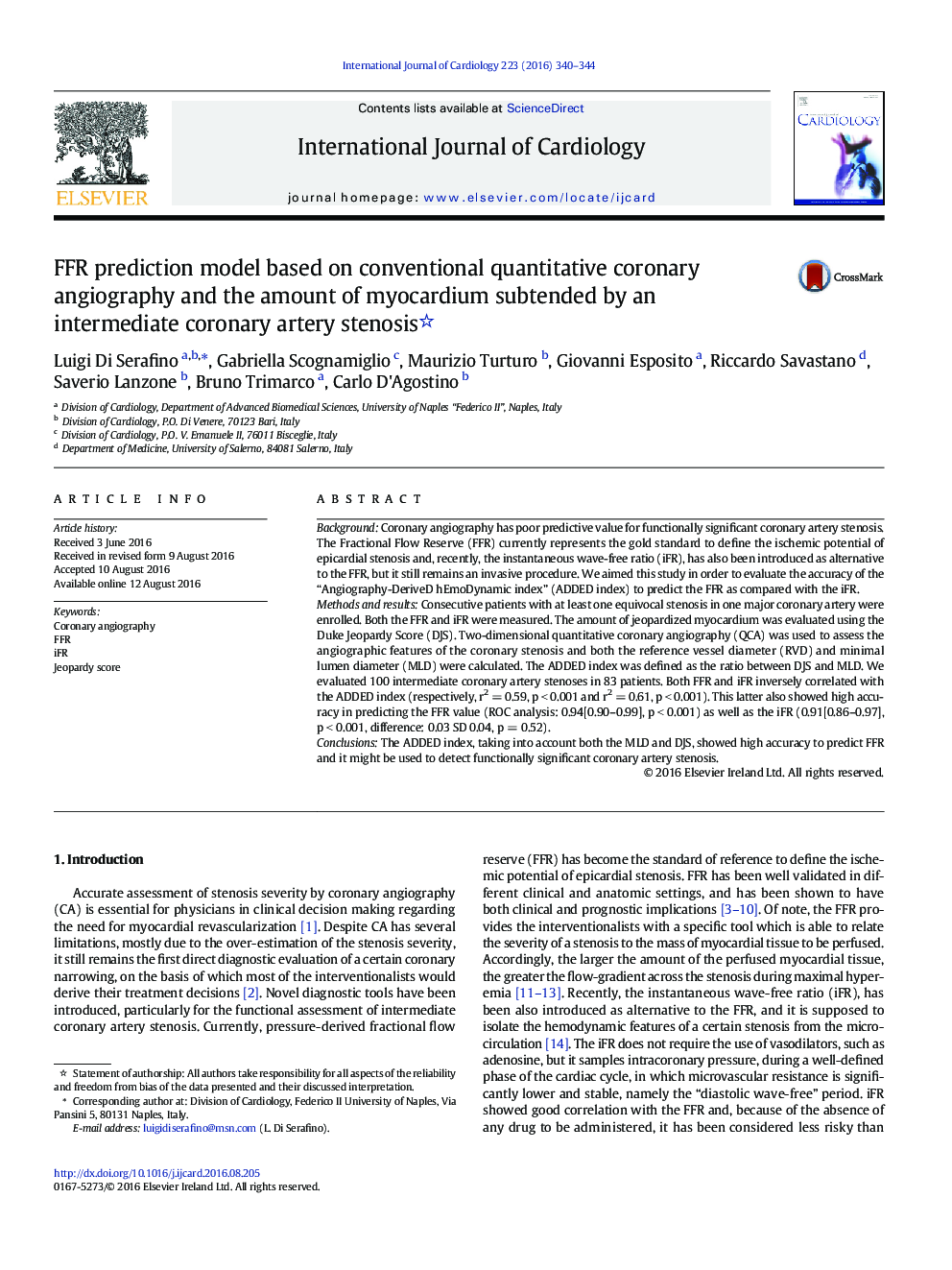| کد مقاله | کد نشریه | سال انتشار | مقاله انگلیسی | نسخه تمام متن |
|---|---|---|---|---|
| 5963136 | 1576125 | 2016 | 5 صفحه PDF | دانلود رایگان |

BackgroundCoronary angiography has poor predictive value for functionally significant coronary artery stenosis. The Fractional Flow Reserve (FFR) currently represents the gold standard to define the ischemic potential of epicardial stenosis and, recently, the instantaneous wave-free ratio (iFR), has also been introduced as alternative to the FFR, but it still remains an invasive procedure. We aimed this study in order to evaluate the accuracy of the “Angiography-DeriveD hEmoDynamic index” (ADDED index) to predict the FFR as compared with the iFR.Methods and resultsConsecutive patients with at least one equivocal stenosis in one major coronary artery were enrolled. Both the FFR and iFR were measured. The amount of jeopardized myocardium was evaluated using the Duke Jeopardy Score (DJS). Two-dimensional quantitative coronary angiography (QCA) was used to assess the angiographic features of the coronary stenosis and both the reference vessel diameter (RVD) and minimal lumen diameter (MLD) were calculated. The ADDED index was defined as the ratio between DJS and MLD. We evaluated 100 intermediate coronary artery stenoses in 83 patients. Both FFR and iFR inversely correlated with the ADDED index (respectively, r2 = 0.59, p < 0.001 and r2 = 0.61, p < 0.001). This latter also showed high accuracy in predicting the FFR value (ROC analysis: 0.94[0.90-0.99], p < 0.001) as well as the iFR (0.91[0.86-0.97], p < 0.001, difference: 0.03 SD 0.04, p = 0.52).ConclusionsThe ADDED index, taking into account both the MLD and DJS, showed high accuracy to predict FFR and it might be used to detect functionally significant coronary artery stenosis.
Journal: International Journal of Cardiology - Volume 223, 15 November 2016, Pages 340-344